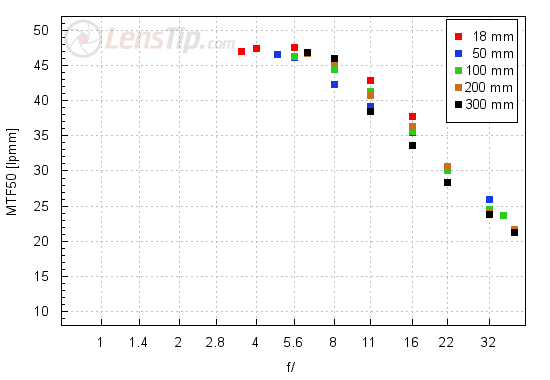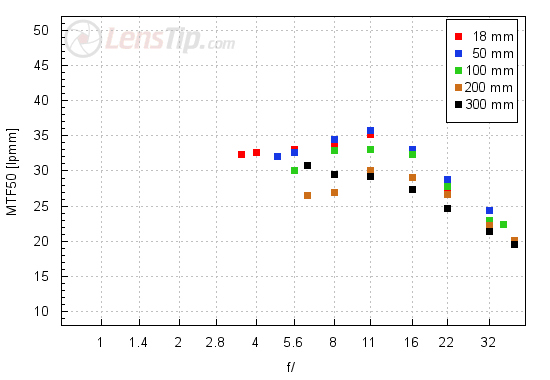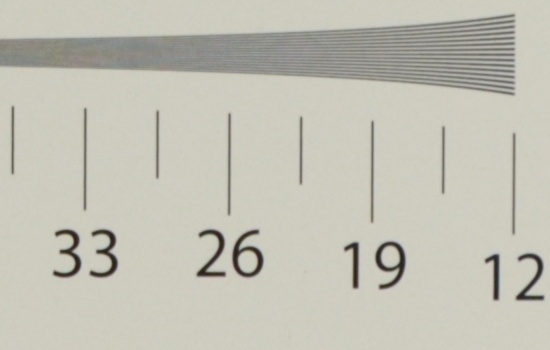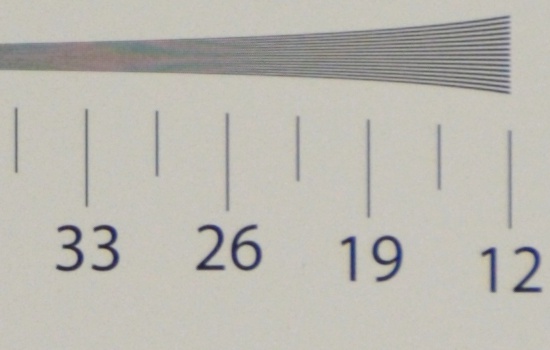Nikon Nikkor AF-S DX 18-300 mm f/3.5-6.3G ED VR
4. Image resolution
Let’s check how the tested Nikkor compares here in the frame centre – the graph below shows appropriate results at 18, 50, 100, 200 and 300 mm.

Please Support UsIf you enjoy our reviews and articles, and you want us to continue our work please, support our website by donating through PayPal. The funds are going to be used for paying our editorial team, renting servers, and equipping our testing studio; only that way we will be able to continue providing you interesting content for free. |
- - - - - - - - - - - - - - - - - - - - - - - - - - - - - - - - - - - - - - - - - - - - - - - -
Two things stick out immediately. Firstly, the performance at all focal lengths is very even – a rarity among lenses with such wide focal ranges and a property the tested device should only be praised for. Secondly, the best results can be seen near the maximum relative aperture; what’s more, those results are clearly above the decency level. Of course there are no records here but nobody expects them when dealing with a megazoom. Still it is worth emphasizing that the new, cheaper model fares much better than its predecessor which can compete successfully with the Nikkor, tested here, only at 18 mm and fares definitely worse at the longer end. It is interesting indeed that the newer but cheaper and less complex lens has also better results in this category. I wonder who approved the production implementation of the previous model; it is clear it could have been done better and cheaper…
The megazoom usually feature some weaknesses on the edge of the frame – is it also true for the tested Nikkor? Let’s find out.

Unfortunately you can say you deal here with one big Achilles heel practically at all focal lengths. The lens never exceeds the decency level even if you stop down the aperture in a significant way. It was clearly a kind of strategy of Nikon optics specialists – the image quality in the frame centre was an absolute priority and the good correction of basic optical aberrations on the edge of the sensor was neglected.
How the newer lens compares to its predecessor? The assessment depends on the focal length. At 18 mm it is almost a draw, in the 50-200 mm range the older device prevails and at the maximum focal length the new lens is better, with noticeably higher MTF values.
Our overall assessment of the new Nikkor is definitely better than the assessment of its predecessor, which was able to prevail in our test only on the edge of the frame. The new Nikkor 18-300 mm has distinctly better and more even results in the frame centre for a change. Unfortunately none of those instruments offers any assets which would make them defeat the much cheaper Tamron 16-300 mm which additionally comes with more useful focal range. If there is no visible difference why overpay?
Traditionally we end this chapter with crops taken from photos of our test scene in the frame centre. It’s worth reminding here that these are JPEG files saved along RAW files we used for the analysis above.
| D7000, JPEG, 18 mm, f/5.6 |
 |
| D7000, JPEG, 300 mm, f/6.3 |
 |






